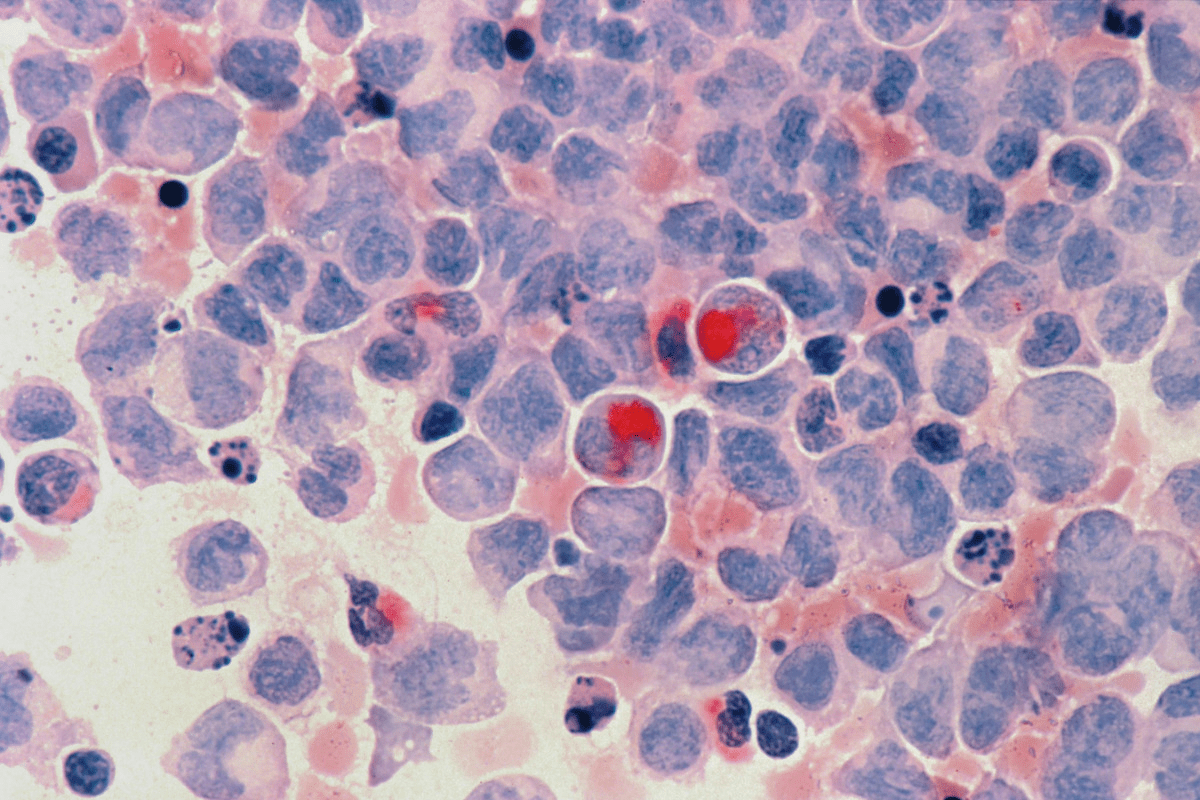Last Updated on November 27, 2025 by Bilal Hasdemir

In the world of oncology, essential oncology medications are key to better patient care. By 2025, the cancer medication market will hit over $250 billion. This growth comes from new immunotherapy and targeted therapies.
At Liv Hospital, we focus on giving patients the best cancer treatment medicine. These advances in oncology medicine are not just about living longer. They also make life better for patients everywhere. Cancer drug: top 7 essential oncology medications in 2025 you should know about.
Key Takeaways
- The global cancer medication market is projected to exceed $250 billion by 2025.
- Innovations in immunotherapy and targeted therapies are driving this growth.
- Essential oncology medications are critical for better patient outcomes.
- Liv Hospital is dedicated to making top cancer treatment medicine available.
- Advances in oncology medicine are boosting survival rates and improving life quality.
The Evolving Landscape of Cancer Treatment in 2025

In 2025, the world of cancer treatment is changing fast. New challenges and innovations are mixing. It’s key to know both the problems and the solutions in cancer care.
Current Challenges in Oncology Medicine
Oncology medicine has made big strides, but it faces big hurdles. Drug shortages and access problems affect patients. We need better, targeted treatments for cancer patients.
New drugs like fam-trastuzumab deruxtecan-nxki and acalabrutinib are more effective. Butt their high cost makes it hard for some to get them.
| Challenge | Description | Impact |
| Drug Shortages | Limited availability of critical cancer medications | Delays in treatmentimpacting patient outcomes |
| Access Issues | High costs and insurance coverage limitations | Reduced access to innovative therapies for some patients |
| Treatment Resistance | Development of resistance to existing therapies | Need for new and innovative treatment approaches |
Breakthrough Innovations Shaping Cancer Care
Breakthroughs in cancer treatment are exciting. Immunotherapy and targeted therapies are leading the way. For example, new immune checkpoint inhibitors and antibody-drug conjugates are helping patients more.
These new treatments are not only working better but also have fewer side effects. The focus on personalized medicine is also growing. It aims to tailor treatments to each patient’s needs.
Looking ahead, combining new treatments with better access is key. We’re dedicated to pushing forward in this field. Our goal is to keep improving care for cancer patients.
Understanding the Global Cancer Drug Market

The global cancer drug market is expected to hit over $250 billion by 2025. This growth is thanks to new advancements in oncology.
The way we treat cancer is changing fast. The global cancer drug market is growing a lot. This growth comes from more people needing effective treatments and new therapies coming out.
Market Size and $250 Billion Projection for 2025
The cancer drugs market is set to reach new heights by 2025. Several things are helping it grow:
- Increasing cancer prevalence: More people are getting cancer, which means more need for treatments.
- Advancements in oncology: New research has led to better and more targeted treatments.
- Aging population: As more people get older, cancer rates are expected to go up, boosting the market.
Key Players in Oncology Medication Development
The field of developing oncology medications is very competitive. Several big players are leading the way:
- Major pharmaceutical companies: Companies like Roche, Merck, and Pfizer are leading in cancer research and development.
- Biotechnology firms: Biotech companies are key in creating new cancer treatments, like immunotherapies and targeted treatments.
- Research institutions: Academic and research institutions are working with industry partners to push cancer research forward and develop new treatments.
These players are not just making new cancer drugs. They’re also improving current treatments. This helps patients get better results and makes more treatments available worldwide.
Types of Cancer Drugs Transforming Treatment in 2025
The world of cancer care is changing fast in 2025. New and innovative oncology medications are leading this change. Different types of cancer drugs are key to this transformation.
Immunotherapy Agents
Immunotherapy agents are leading the way in cancer treatment. They use the immune system to fight cancer. Pembrolizumab is a top example, showing great results in many cancers. For more on top cancer drugs, including immunotherapy.
Immunotherapy agents have many benefits:
- They boost the immune system’s fight against cancer.
- They can lead to long-term cancer control.
- They improve patients’ quality of life.
Targeted Therapies
Targeted therapies are another important group of cancer drugs. They aim at specific parts of cancer cells to stop their growth. This approach can be more effective and have fewer side effects than traditional chemotherapy.
Here are some examples:
| Therapy Type | Target | Cancer Type |
| Tyrosine Kinase Inhibitors | Specific tyrosine kinases | Chronic myeloid leukemia |
| Monoclonal Antibodies | Cancer cell surface proteins | Various, including breast and lymphoma |
Antibody-Drug Conjugates
Antibody-drug conjugates (ADCs) combine the precision of monoclonal antibodies with the power of drugs. ADCs like trastuzumab deruxtecan are showing great promise in treating some cancers. They offer a more focused treatment approach.
- They bind to cancer cells through the monoclonal antibody.
- The cancer cell takes in the ADC.
- The drug inside kills the cell.
By using these different cancer drugs, we can keep improving treatment and care in 2025 and later.
WHO Essential Medicines List: Impact on Cancer Treatment Access
The World Health Organization’s (WHO) Essential Medicines List is key in making cancer treatment available worldwide. It highlights the most important drugs for treating health issues, including cancer. By adding cancer drugs to this list, the WHO shows its vital role in healthcare globally.
Getting cancer treatment is a big problem worldwide. The WHO Essential Medicines List helps by guiding health policies. It makes sure essential cancer drugs are available. This list is more than a list of medicines; it’s a call for healthcare systems to make these drugs accessible.
Criteria for Including Cancer Drugs on the Essential List
The WHO has strict rules for adding cancer drugs to the Essential Medicines List. First, the drug must show clear benefits, like improving survival or quality of life. The drug’s safety, how well it works, and how it compares to other treatments are also checked.
The WHO looks at the disease’s impact and how important it is for public health. This means treatments for common or serious cancers get priority. The list is updated often to keep up with new research and treatments.
Global Initiatives to Improve Medication Accessibility
Many global efforts aim to make cancer medications more accessible. These efforts aim to remove obstacles like high prices, poor healthcare, and rules. Governments, international groups, and drug companies are working together to solve these problems.
One big strategy is to use generic and biosimilar drugs. They can make treatments cheaper without losing quality. Also, improving healthcare in poor countries is key to getting these medicines to those who need them.
By understanding the WHO Essential Medicines List and supporting efforts to make medicines more accessible, we can make cancer treatment fairer and more effective worldwide.
Pembrolizumab: Leading the Immune Checkpoint Inhibitor Revolution
Pembrolizumab is a game-changer in cancer treatment. It’s an immune checkpoint inhibitor that works well against many cancers. This has led to better results for patients.
Mechanism of Action and Cancer Types Treated
Pembrolizumab targets the PD-1 receptor on T cells. This stops cancer cells from hiding from the immune system. It’s been shown to work well against melanoma, lung cancer, and more.
This drug is a big deal in cancer treatment. It helps the body fight cancer better. This opens up new ways to treat cancer.
Clinical Outcomes and Patient Benefits
Studies show pembrolizumab helps patients live longer and fight cancer longer. The KEYNOTE trials have shown it works well and is safe.
Patients feel better because pembrolizumab has fewer side effects than older treatments. This makes it a top choice for many doctors and patients.
Future Developments and Combination Therapies
There’s a lot of research on pembrolizumab for the future. It’s being tested with other treatments to make it even better. These combination therapies aim to beat cancer’s defenses and help patients more.
As research goes on, pembrolizumab will likely be used in new ways. It could help more people with cancer and make treatments better.
Enhertu (Trastuzumab Deruxtecan): Redefining HER2-Targeted Therapy
Enhertu, also known as trastuzumab deruxtecan, is changing how we treat HER2-positive breast cancer. It uses a new way to fight cancer with its antibody-drug conjugate design. This drug is also being studied for other types of cancer.
Innovative Antibody-Drug Conjugate Design
Enhertu combines an antibody’s precision with a chemotherapy drug’s power. The antibody finds and sticks to HER2 proteins on cancer cells. Then, it brings the chemotherapy right to the tumor. This method keeps healthy cells safe, leading to fewer side effects and better results for patients.
Expanded Indications and Treatment Success
Studies have shown that Enhertu works well for HER2-positive breast cancer, even after other treatments. The drug has shown strong results with a good safety record. Researchers are now looking into its use for other HER2-positive cancers, like stomach cancer.
| Cancer Type | Treatment Line | Response Rate |
| HER2-positive Breast Cancer | Third-line or later | 60.3% |
| HER2-positive Gastric Cancer | Third-line or later | 42.9% |
Managing Side Effects and Treatment Protocols
Enhertu brings many benefits but also has side effects. Common issues include nausea, tiredness, and blood-related problems. It’s important to manage these side effects well to keep patients feeling good. Doctors closely watch patients and adjust treatments as needed.
As we learn more, we expect to see Enhertu play an even bigger role in fighting cancer. It could lead to better results for patients.
The Essential Cancer Drug of 2025: Keytruda’s Expanding Role
Keytruda has become a key player in cancer treatment. It’s leading a shift towards immunotherapy. Known as pembrolizumab, it’s at the heart of this change.
Approvals Across Multiple Cancer Types
Keytruda is approved for many cancers. It’s shown to work well against melanoma, lung cancer, and head and neck cancers. The expanding list of approvals shows its wide range of uses.
Now, Keytruda is often used first in some cancers. This is because it boosts the body’s immune system to fight cancer better.
Biomarker Testing and Personalized Treatment
Keytruda use is guided by biomarker testing. Tests like PD-L1 levels help decide who benefits most. This is a big step towards personalized medicine.
Thanks to biomarker testing, doctors can choose better treatments. This approach is becoming more common as we learn more about cancer.
Economic Impact and Accessibility Challenges
Keytruda has changed cancer treatment, but it’s expensive. This creates big financial problems for healthcare and patients. The high cost makes it hard for some to get the treatment they need.
There are efforts to make Keytruda and other cancer drugs more accessible. For example, the World Health Organization is working to include them on the Essential Medicines List. We support these efforts to help more people get the treatments they need.
Ibrutinib: Transforming Blood Cancer Treatment
Ibrutinib has changed how we treat blood cancers. It has brought big improvements in managing these diseases. This is thanks to its new way of working.
Mechanism and Treatment Applications
Ibrutinib blocks the BTK enzyme, which helps cancer cells grow. This targeted approach is very effective. It helps treat CLL, MCL, and WM.
Ibrutinib is used in more ways than first thought. It’s now used in:
- First-line treatment for CLL patients
- Treatment of relapsed or refractory MCL
- Management of WM in appropriate patient populations
Long-term Efficacy Data and Survival Benefits
Long-term studies show ibrutinib works well over time. Patients live longer and feel better. They have:
- Improved overall survival rates
- Prolonged progression-free survival
- Enhanced quality of life compared to traditional therapies
These findings make ibrutinib a key treatment for blood cancers. We keep watching long-term data to make treatments even better.
Next-Generation BTK Inhibitors on the Horizon
New BTK inhibitors are coming. They aim to fix some issues with ibrutinib. These include:
- Improved safety profiles
- Enhanced efficacy in certain patient populations
- Potential for overcoming resistance mechanisms
We’re looking forward to these new treatments. They could make blood cancer treatment even better. As research grows, we expect more tailored treatments for our patients.
Osimertinib: The Standard of Care for EGFR-Mutated Lung Cancer
Osimertinib has changed how we treat EGFR-mutated lung cancer. It’s now the go-to treatment for patients everywhere. This drug works well against specific mutations, leading to better results for patients.
Targeting Resistant Mutations in Lung Cancer
Osimertinib shines when it comes to fighting resistant mutations. The T790M mutation is one that it can tackle, even if other EGFR inhibitors can’t. This makes it a key option for those who’ve grown resistant to other treatments.
First-Line Treatment and Extended Survival
Osimertinib is also a first-line treatment that extends life. Studies show it improves how long patients live without their cancer getting worse. It also boosts overall survival rates compared to older treatments.
The following table summarizes the key findings from clinical trials on osimertinib’s efficacy:
| Treatment | Progression-Free Survival | Overall Survival |
| Osimertinib | 18.9 months | 38.6 months |
| Previous EGFR inhibitors | 10.2 months | 31.8 months |
Quality of Life Considerations for Patients
Osimertinib also boosts patients’ quality of life. It shrinks tumors and controls symptoms, making everyday life better. Patients on this drug often say they feel fewer symptoms and are generally happier.
Key benefits of osimertinib include:
- Effective targeting of resistant mutations
- Improved progression-free and overall survival
- Enhanced quality of life for patients
Ethical Standards and International Access to Advanced Cancer Medications
Advanced cancer medications are changing how we treat cancer, but they’re not available everywhere. This creates big ethical problems. We need to make sure everyone has access to these treatments.
The world’s cancer situation is very different in different places. Some areas have better healthcare and more money. This makes it harder to get treatments to everyone who needs them.
Disparities in Global Access to Innovative Therapies
In some countries, new cancer treatments are easy to get. But in others, it’s very hard. Rich countries have more access to new treatments than poor ones. This is because of high costs, bad healthcare, and rules that make it hard to get treatments.
These differences are unfair. They mean some people don’t get the best care. We need to work together to fix this. Governments, doctors, and drug companies must all help.
Hospital Networks and Treatment Centers of Excellence
Hospital networks and top cancer centers are key to better care. They offer the best treatments and help find new ones. They also work with other hospitals to share knowledge.
By linking these centers with local hospitals, we can spread the best care. This helps make cancer treatment better everywhere.
These centers also teach doctors and nurses. This helps more people get top-notch care. It makes sure everyone has a chance to get new treatments.
Conclusion: The Future of Cancer Treatment and Patient Outcomes
Looking ahead, cancer treatment is set to get even better. New medicines in oncology are changing how we fight cancer. These include immunotherapy and targeted therapies.
Drugs like Pembrolizumab and Enhertu are making a big difference. They’ve shown great results in trials. This gives hope to many people with cancer.
More research means even better treatments are on the way. As medicine keeps improving, patients will live longer and feel better. This is great news for those fighting cancer.
Healthcare teams and patients must keep up with these advances. Together, they can make cancer treatment even more effective. This leads to better care and outcomes for all.
FAQ
What are the top cancer drugs in 2025?
In 2025, the top cancer drugs include pembrolizumab and Enhertu (trastuzumab deruxtecan). Also, Keytruda, ibrutinib, and osimertinib are among the most used. They treat various cancers, like blood cancers and lung cancer.
What is the role of immunotherapy in cancer treatment?
Immunotherapy is key in fighting cancer. It uses the body’s immune system. Drugs like pembrolizumab and Keytruda help the immune system attack cancer cells.
What is the WHO Essential Medicines List, and how does it impact cancer treatment?
The WHO Essential Medicines List includes vital drugs for health issues, including cancer. It ensures access to essential cancer treatments. It also guides global health efforts to make medicines more accessible.
How do antibody-drug conjugates work in cancer treatment?
Antibody-drug conjugates, like Enhertu, combine antibodies with chemotherapy. They target cancer cells and deliver a toxic payload. This reduces harm to healthy cells.
What are the benefits and challenges of using targeted therapies in cancer treatment?
Targeted therapies, such as ibrutinib and osimertinib, have many benefits. They are more effective and have fewer side effects. Bu, they can face challenges like resistance and the need for biomarker testing.
How do cancer treatment costs impact access to innovative therapies?
High costs of cancer treatment can limit access to new therapies, mainly in low-income countries. This highlights the need for global efforts to make treatments more accessible and reduce disparities in cancer care.
What is the significance of biomarker testing in cancer treatment?
Biomarker testing is vital in cancer treatment. It helps find the right treatment for each patient. This leads to better treatment outcomes and fewer side effects.
What are the future developments in cancer treatment expected to be?
Future cancer treatments will likely see more immunotherapy, targeted therapies, and antibody-drug conjugates. New treatments, like next-generation BTK inhibitors, are also expected to emerge.
How can hospital networks and treatment centers of excellence improve cancer care?
Hospital networks and centers of excellence can enhance cancer care. They offer specialized care, innovative treatments, and teams of experts. They also support clinical trials, improving outcomes and reducing disparities.
References
- Siddiqui, T. (2022). Enhertu (Fam-trastuzumab-deruxtecan-nxki): A targeted therapy for HER2-positive cancers. PMC. https://pmc.ncbi.nlm.nih.gov/articles/PMC9577648/






